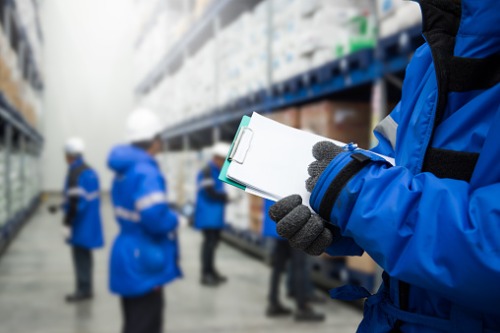Investor interest in cold storage facilities is at an all-time high, as online grocery shopping is expected to grow in popularity throughout the year

Fresh food delivery and online grocery sales are driving demand for cold storage space and investors in the US are taking note. Today’s push for cold storage facilities is similar to the increased demand we witnessed for warehouses, thanks to the rise in e-commerce activity. The CBRE estimates the demand for cold storage space will go up between 70 million and 100 million square feet over the next five years as consumers continue to shop for perishable food items online, requiring more freezer and cooler space for storage and distribution.
About half of U.S. consumers shop for packaged goods online, but this is expected to go up to 70% by 2022, turning the online grocery business into a $100 billion dollar a year business, according to research by FMI and Nielsen.
“Grocery stores are becoming smarter and developing ways to get food to consumers quicker and easier; consequently, online grocery shopping is expected to become a much greater portion of retail sales, driving refrigerated warehouse demand,” according to a three-part report by CBRE.
Investors interested in cold storage assets are typically very low, but there are several new entrants looking to invest in this segment of the market, the report stated. New demand is driving competition and prospective investors should look to forge relationships with operators considering the cold storage industry is highly specialized compared to a traditional warehouse.
“Cold storage investment volume has increased by an average of 6.2% annually since 2014. Volume reached $423 million in 2018, up 82.6% from 2017, mainly due to large acquisitions in Chicago, Los Angeles, Boston, Honolulu, Miami and Indianapolis,” the report said.
There are also some big challenges that make investing in cold storage a bit trickier than the average commercial or industrial space.
One of these is the scarcity of available assets. CBRE research estimates the cold storage vacancy rate is at 4.3% and in some markets where the demand is high, it’s even lower. The USDA found that the U.S. currently has about 215 million square feet of industrial cold storage space. That’s expected to go up about 2.5 million square feet this term according to the CBRE, but a lot of the new supply is already called for.
The report indicates that most of this new construction is built-to-suit and owned by operators like Americold, Preferred Freeze Services and United States Cold Storage, which makes even less of the new development available to investors. In addition to the lack of availability, a lot of the existing spaces require renovations and upgrades, making investment opportunities even more difficult to come by.
Another big barrier for investors looking into cold storage is the specialized knowledge that’s needed to property maintain the property.
“Unlike a traditional dry warehouse, a cold storage facility requires specialized features and equipment such as insulated metal panels, under-floor hearing, refrigeration systems, packing rooms, blast freezing and fumigation.” The report added that while the number of skilled developers and builders is limited, the demand is pushing developers to become more versatile and knowledgeable in the field.
A cold storage facility is also not a one-size fits all and is very user-specific. Because meats, seafood and other perishable food items all need different climates for optimal storage, the facility must adhere to strict temperature requirements. This contributes to almost tripling the construction costs per square foot compared to a traditional warehouse, according to the CBRE report. It also adds about four to five months to construction time.
“Furthermore, operating expenses are typically high due to power usage, as refrigerated warehouses have one of the highest electric consumption rates in the commercial building sector,” the report stated.
Despite these challenges, a huge upside is the fact that the demand is definitely outweighing the supply, which results in these facilities commanding higher rental premiums than dry warehouses. Plus, according to the report, occupiers tend to stay in the same space or very long periods of time and are also willing to commit to long lease terms, sometimes of 10 years or longer.



